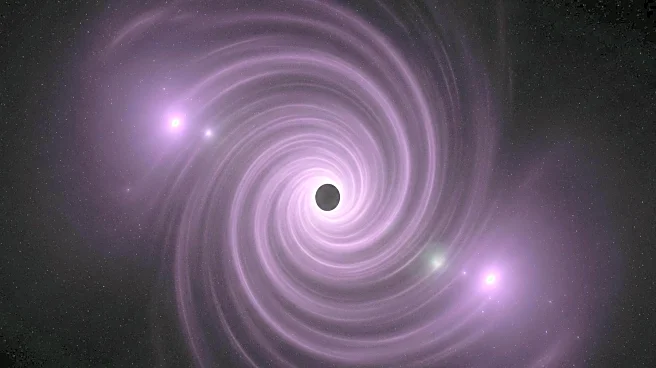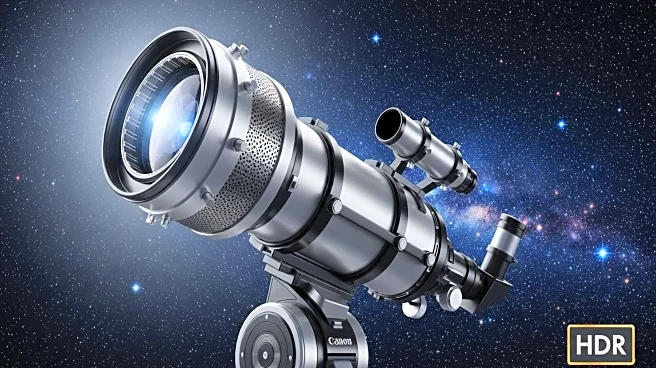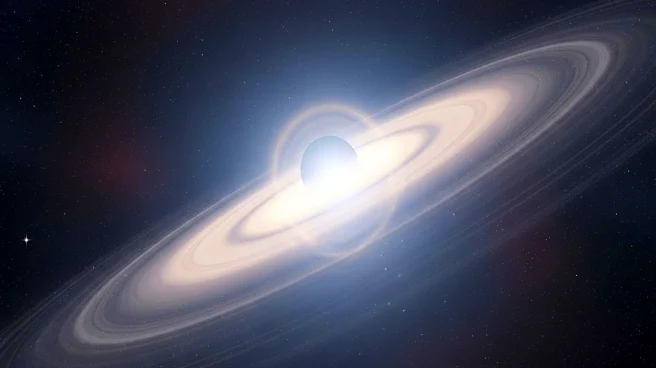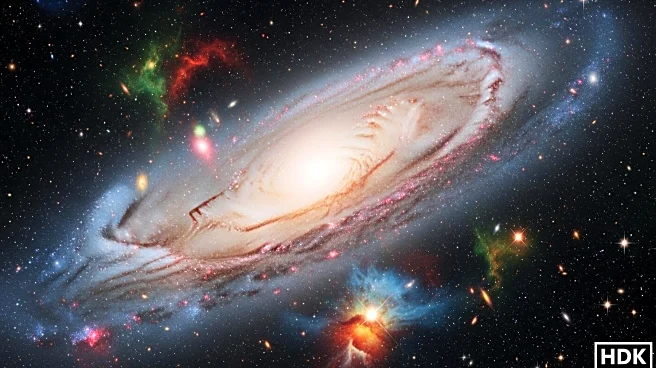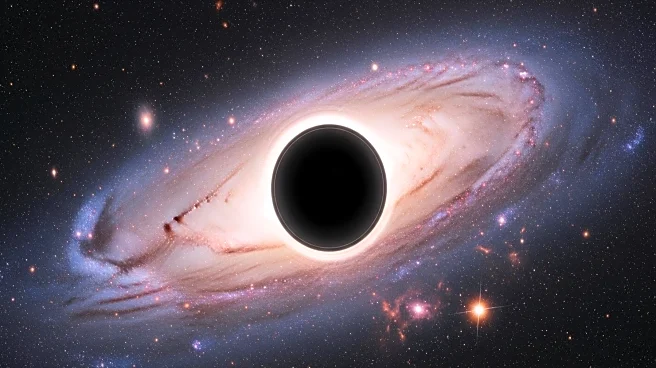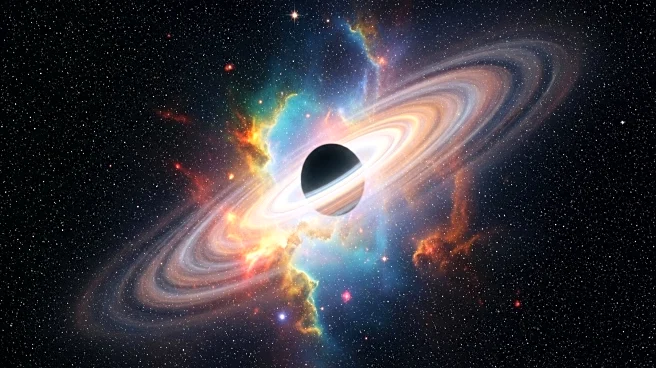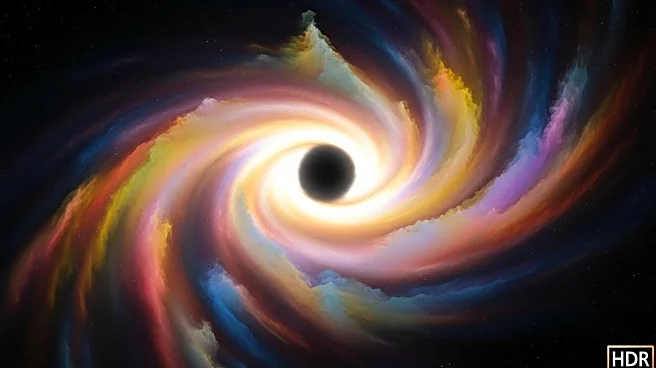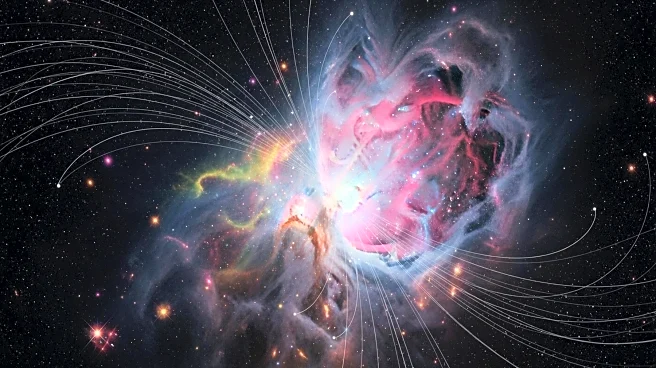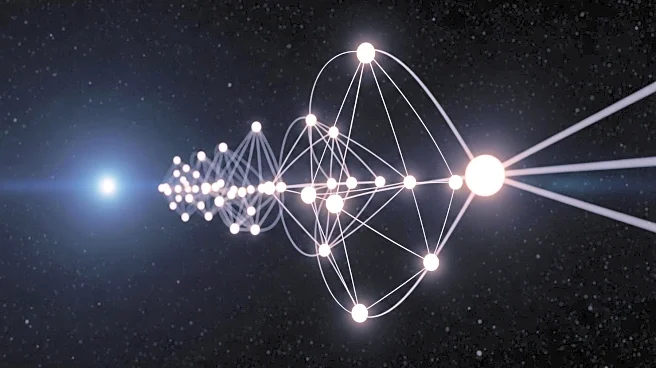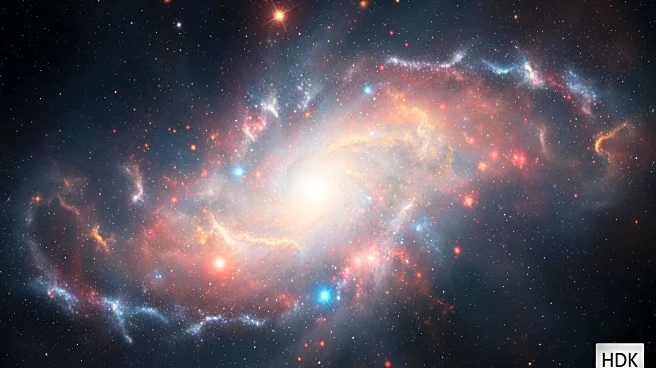What's Happening?
Astrophysicists using the Very Large Telescope in Chile have found evidence that the black hole of an infant galaxy was ten times smaller than theoretical models predicted. This discovery challenges previous assumptions about the size of early supermassive black holes and suggests that methods used to weigh these black holes may not be reliable in the early universe. The study, available as a preprint on arXiv, indicates that black hole masses in the early universe may have been systematically overestimated.
Why It's Important?
The findings could lead to a reevaluation of models of cosmic evolution, as they suggest that our understanding of the dynamics of the early universe may be incomplete. If similar behavior is found in other galaxies, it could reshape theories about the formation and growth of supermassive black holes, which are central to the structure and evolution of galaxies. This research highlights the need for more accurate methods to study the early universe.
What's Next?
Researchers will continue to investigate the behavior of black holes in other galaxies to determine if the observed phenomenon is widespread. This could lead to new insights into the formation and evolution of galaxies and the role of black holes in cosmic history. Further studies may also refine the techniques used to measure black hole masses in the early universe.
Beyond the Headlines
The study underscores the complexities of understanding the early universe and the challenges of accurately measuring cosmic phenomena. It may inspire new research approaches and technologies aimed at uncovering the mysteries of black hole formation and their impact on galaxy evolution.

